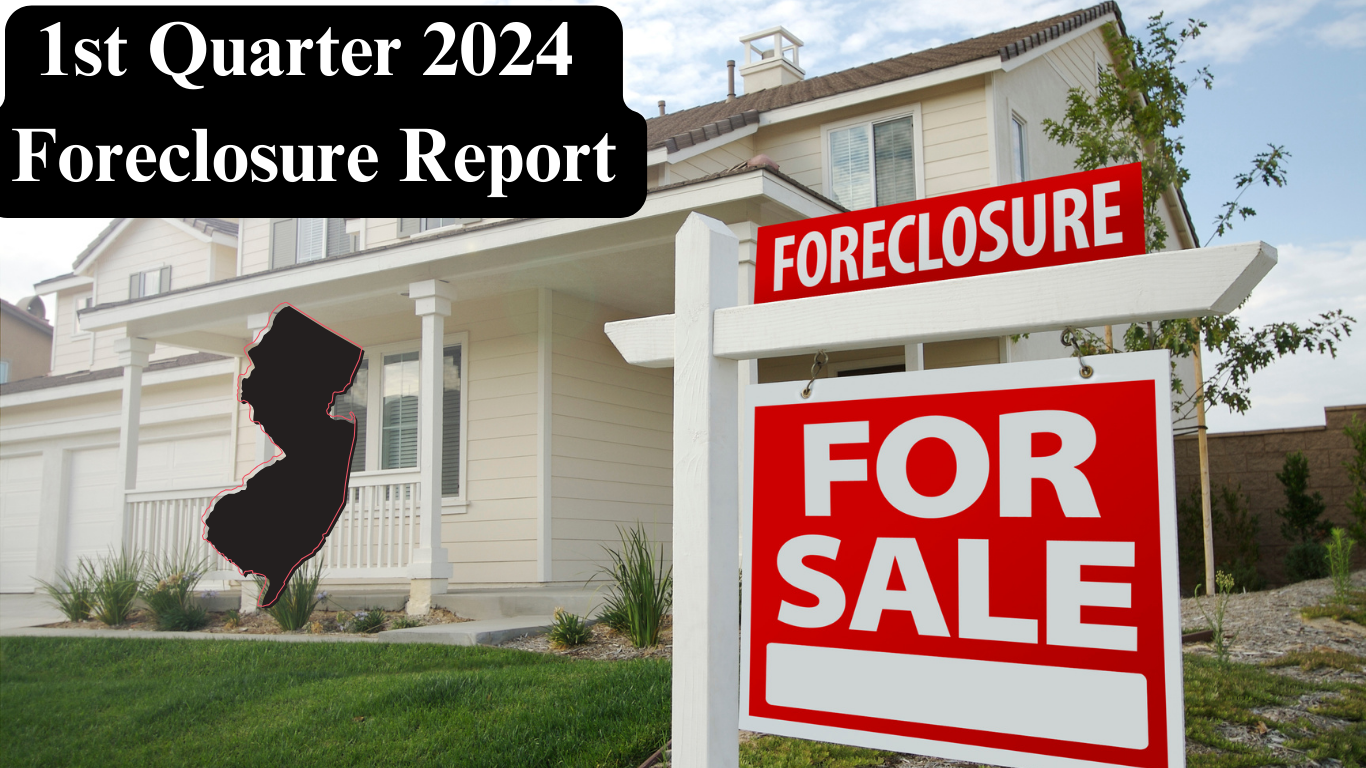NJ Foreclosure Enigma: Is the Decline Sustainable or a Statistical Mirage?
On April 10, 2024, ATTOM, a leading real estate data solutions provider, released its much-anticipated Q1 2024 U.S. Foreclosure Report. This report provides valuable insights into the state of the U.S. housing market, specifically regarding foreclosure activity. Let's delve into the key findings of the report and analyze what they mean for homeowners and the broader market.
National Trends
According to the report, there were 102,207 foreclosure filings (default notices, scheduled auctions, and bank repossessions) in the first quarter of 2024. This represents a significant decrease of 28% compared to Q1 2023 (143,013 filings) and a 77% drop from the peak reached in Q2 2020 (440,329 filings) at the height of the COVID-19 pandemic forbearance programs.
The report highlights several factors contributing to the decline in foreclosure activity. One key reason is the strong housing market performance in recent years. Rising home prices have created significant equity for many homeowners, making them less likely to fall behind on their mortgages and face foreclosure. Additionally, government stimulus programs during the pandemic helped many struggling homeowners stay afloat.
However, the report also cautions that the decline in foreclosures may not be entirely sustainable. Rising interest rates and potential economic headwinds could put a strain on some homeowners' finances, leading to an uptick in foreclosures in the coming quarters.
State-by-State Breakdown
The foreclosure landscape varies considerably across the United States. While some states are witnessing a significant decline in foreclosure activity, others are experiencing a more modest decrease or even a slight uptick.
ATTOM's report breaks down the data state-by-state. Here's a glimpse into some of the findings:
States with the Highest Foreclosure Rates: States like Florida, Nevada, and Arizona, which were hit hard by the housing crisis of 2008, continue to see higher foreclosure rates compared to the national average.
States with the Lowest Foreclosure Rates: States in the Northeast, such as Vermont, New Hampshire, and Maine, have historically low foreclosure rates, and this trend continues in Q1 2024.
New Jersey in Focus
New Jersey falls somewhere in the middle of the national spectrum when it comes to foreclosure activity. According to ATTOM's data, New Jersey saw a foreclosure rate of one filing per every 10,852 homes in Q1 2024. This represents a decrease of 22% compared to Q1 2023.
While this is positive news, it's important to consider the historical context. New Jersey has foreclosure laws that are considered borrower-friendly compared to some other states. This means that the foreclosure process can be lengthy, potentially leading to a backlog of cases and a seemingly lower foreclosure rate.
It's also crucial to acknowledge the regional variations within New Jersey. Foreclosure rates may be higher in certain counties compared to others. Additionally, certain demographics, like first-time homeowners, might be more susceptible to foreclosure.
Looking Ahead: What Does This Mean for Homeowners and the Market?
The decrease in foreclosure activity is a welcome sign for the housing market. It suggests that homeowners are generally in a good financial position and able to manage their mortgages. However, the potential for rising interest rates and economic uncertainty poses a challenge.
Homeowners who are concerned about their ability to make mortgage payments should explore their options. FHA and VA loans often have programs to help struggling homeowners. Additionally, contacting their lender directly to discuss loan modification possibilities is a proactive step.
For the broader market, the decline in foreclosures suggests a level of stability. However, it's important to monitor economic indicators and foreclosure trends closely. A significant rise in foreclosures could put downward pressure on home prices.
Conclusion
ATTOM's Q1 2024 Foreclosure Report paints a cautiously optimistic picture of the U.S. housing market. While foreclosure activity remains low, potential economic headwinds warrant close attention. Homeowners facing financial hardship should explore available resources, and market participants should stay informed about evolving trends.
This report serves as a valuable snapshot of the current foreclosure landscape. By understanding these trends, homeowners, investors, and policymakers can make informed decisions about the future of the housing market.
